 Nepal : Safety by City
Nepal : Safety by City
Nepal hits differently.
The geography alone is extreme—think jungles, plains, and the world’s tallest mountain, all packed into a country roughly the size of Illinois.
Mount Everest looms large in the national identity, standing at 29,032 feet, but Nepal’s story and appeal go way beyond that famous summit.
Once the crossroads of ancient trade routes between India and Tibet, Nepal remained closed to outsiders until the mid-20th century.
It was a monarchy until 2008, when it became a federal democratic republic after years of political unrest and a civil war.
You still feel those layers where ancient traditions brush up against modern tension, monasteries and mountaintop prayer flags coexisting with roadblocks and diesel fumes.
More than a million tourists visit Nepal every year, and not just to climb.
The draw includes sacred pilgrimage sites like Lumbini, wildlife spotting in Chitwan, trekking through the Annapurna range, and exploring Kathmandu’s dense patchwork of temples, markets, and rooftop cafés.
Visiting Nepal requires patience and flexibility.
Roads are rough, flights are weather-dependent, and schedules tend to be loose suggestions.
But the trade-off is access to places that still feel wildly untouched, where cultural heritage hasn’t been scrubbed clean for tourists.
Whether you’re there for a high-altitude trek or just to take it all in at street level, Nepal sticks with you.
Warnings & Dangers in Nepal

OVERALL RISK: MEDIUM
Nepal is considered a medium-risk destination, mostly because of unpredictable infrastructure and natural hazards, not crime. The cities are crowded and chaotic, and the rural areas are remote and hard to access in emergencies. It’s a place where a little planning and situational awareness go a long way.

TRANSPORT & TAXIS RISK: MEDIUM
Getting around can be tricky. This is a medium-risk area mostly due to road conditions and inconsistent driving standards. Taxis in Kathmandu are common but rarely use meters, so agree on a price before getting in. Long-distance buses are cheap but prone to delays, breakdowns, and steep mountain roads.

PICKPOCKETS RISK: MEDIUM
Pickpocketing is a medium risk, especially in tourist-heavy areas like Thamel or on crowded public buses. It’s more of a nuisance than a threat, but still, keep your valuables close and don’t leave bags unattended. Most theft here is opportunistic, not aggressive.

NATURAL DISASTERS RISK: HIGH
This is a high-risk category. Nepal is prone to earthquakes, landslides, and floods, especially during the monsoon season. Some trekking routes can become impassable without warning. Always check current conditions and avoid travel to mountainous areas during heavy rains or immediately after a quake.

MUGGING RISK: LOW
Mugging is a low risk across most of Nepal, including the cities. Violent crime against tourists is rare. Still, don’t walk alone at night in unfamiliar areas, and avoid poorly lit side streets. Common sense is your best defense.

TERRORISM RISK: LOW
Nepal has a low terrorism risk. It’s not a major concern for travelers. There have been isolated political clashes in the past, but they rarely target foreigners. Just keep an eye on local news in case of protests or general strikes, which can still disrupt travel.

SCAMS RISK: MEDIUM
Scams are a medium risk, mostly involving inflated prices, fake trekking permits, or unofficial “guides” who disappear after payment. Be especially cautious at border crossings or when booking treks. Only use reputable agencies and double-check paperwork is in order before you pay for anything.

WOMEN TRAVELERS RISK: MEDIUM
Nepal is a medium-risk destination. Many women travel here safely, but street harassment and unwanted attention can happen, especially in more rural areas. Dress modestly, avoid isolated trails without a guide, and be cautious when accepting help from strangers.

TAP WATER RISK: HIGH
Tap water in Nepal is high risk and not safe to drink. Even locals often boil or filter it. Stick to bottled or filtered water, and avoid ice unless you know it was made from purified sources. Brushing your teeth with tap water is a personal call, but many travelers don’t.
Safest Places to Visit in Nepal
The official website for the Nepal Tourism Board is ntb.gov.np.
Use the Plan Your Trip section to get practical planning help, and be sure to check the dates on the Festival & Events page since crime increases during that time.
Of course, there’s Mount Everest, but that’s in a category of its own.
Climbing it requires serious training, permits, and money.
Another seven “Eight Thousanders” (mountains higher than 8,000 meters) are in Nepal.
Kathmandu is where most travelers start.
It’s crowded and chaotic, but full of historic sites like Boudhanath Stupa, Swayambhunath (aka the Monkey Temple), and the old royal palaces at Durbar Square.
Pokhara is quieter, easier to navigate, and popular for lake views, paragliding, and treks into the Annapurna region.
Chitwan National Park is in the southern lowlands and is known for rhinos, elephants, and jungle safaris.
Lumbini, the birthplace of the Buddha, draws both tourists and pilgrims.
If you’re looking for something off the standard route, the Mustang region near the Tibetan border is culturally distinct and dramatically different in landscape.
Places to Avoid in Nepal
From a crime standpoint, Nepal doesn’t have dangerous neighborhoods or cities beyond the standard safety steps you would take in any foreign location.
It is worth noting that during the festival season, which runs from September to November, crime skyrockets.
That includes pickpocketing, other types of theft, and break-ins.
Most of the safety concerns come down to infrastructure and geography.
That said, avoid trekking routes during the monsoon season—landslides and flash floods are a real risk, not just a warning on paper.
If you’re dreaming of Everest, know that Nepal has tightened requirements.
As of 2024, climbers must have prior high-altitude experience, and commercial expeditions are more closely regulated.
This is meant to reduce overcrowding and tragic accidents, not discourage visitors.
Safety Tips for Traveling to Nepal
- The police in Nepal are generally helpful, though under-resourced in rural areas. In Kathmandu and larger towns, you’ll see both regular police and tourist police. For emergencies, dial 100. Tourist police can be reached at 1144. Keep those numbers saved and don’t hesitate to use them if something feels off.
- Nepal doesn’t have a sophisticated emergency alert system like some countries, so it’s on you to stay updated. Follow local news outlets, ask your hotel staff, and check apps like GDACS or the U.S. Embassy site for warnings about strikes, landslides, or weather disruptions. Knowing self-rescue and survival skills will greatly help in a worst-case scenario.
- Before visiting Nepal, make sure your routine vaccines are up-to-date and consider getting hepatitis A, typhoid, and rabies shots. Dengue fever is a concern, especially in lowland areas and during the monsoon season. You won’t need a yellow fever vaccine unless you’re coming from a country where it’s present.
- You can drive in Nepal with an International Driving Permit, but most people regret trying. Roads are rough, traffic is chaotic, and local drivers don’t follow many rules. Landslides are common in the hills. It’s safer to hire a local driver who knows the terrain and how to handle the unpredictability.
- Nepali is the official language, and while English is spoken in tourist areas, it’s not always reliable for directions or help in smaller towns. Learn a few key phrases and download an offline translation app. Communication gaps can be frustrating when you’re tired, lost, or need help fast.
- Nepal now requires solo foreign trekkers to hire licensed guides when entering national parks and protected areas. This isn’t just a formality. It’s for your safety. Trekkers get lost, injured, or worse every year. A local guide knows the terrain, speaks the language, and can get help if something goes wrong.
- If you’re trekking between June and September, brace yourself for leeches. They thrive in the humid forest trails and are relentless. Wear leech socks or tuck your pants into your boots, and pack salt or Dettol to get them off quickly. They’re gross and persistent but usually harmless.
- Volunteering on a tourist visa in Nepal is illegal. If you’re caught, you can face fines, detention, and even a ban from the country. If you’re planning to volunteer, apply for the correct work visa through an approved organization. Immigration takes this seriously, and it’s not worth the risk.
- Trekking in Nepal means dealing with serious elevation. Some routes climb above 18,000 feet, which can trigger acute mountain sickness even in fit travelers. I know I get winded at about 8,000 feet. Walk slowly, stay hydrated, and give yourself time to acclimate. AMS can be deadly if ignored, so listen to your body and consult your doctor before your trip.
- Kathmandu has a large population of stray dogs, and while some look friendly, resist the urge to pet them. Rabies is a real risk in Nepal. If you’re bitten, you’ll need immediate treatment. It’s better to admire the street dogs from a distance and keep your hands to yourself.
So... How Safe Is Nepal Really?
Nepal comes with a lot of risks, from rampant petty crime to an unstable political situation to even more unstable land that a natural disaster could impact.
I read through the travel advisories from the United States, the United Kingdom, Canada, and Australia.
They all pretty much say the same thing—Nepal is a place where you must exercise increased caution.
The risk you can’t really plan for, aside from staying informed, is the political unrest.
Protests and strikes (called bandhs) can pop up without warning and shut down roads, businesses, and even flights.
These events aren’t usually violent, but they can trap you in place and delay travel plans.
Petty theft is a known issue, especially in crowded areas like Thamel in Kathmandu or on public buses.
Keep your belongings close and don’t flash valuables.
Solo travelers (especially women) face the greatest risk.
And then there’s nature.
Nepal sits in a high-risk earthquake zone, and landslides are common during the monsoon season.
Infrastructure can be shaky in rural areas, which makes emergency help harder to access.
In short, Nepal is absolutely worth visiting, but it’s not a trip to take lightly.
Know the risks, plan with flexibility, and don’t skip travel insurance.
How Does Nepal Compare?
| Country | Safety Index |
|---|---|
| Nepal | 59 |
| Djibouti | 38 |
| Croatia | 83 |
| Mexico | 65 |
| France | 64 |
| Puerto Rico | 34 |
| Somalia | 16 |
| United Kingdom | 77 |
| Peru | 50 |
Useful Information

Visas
Most travelers need a visa to enter Nepal, but it’s easy to get on arrival at Tribhuvan International Airport or border crossings. Bring cash (USD is fine), a passport photo, and check how long you plan to stay. Visa lengths vary, and overstays can get pricey fast.

Currency
Nepal uses the Nepalese Rupee (NPR), and cash is preferred, especially outside Kathmandu. ATMs are common in cities but can be unreliable. U.S. dollars are often accepted for larger purchases or tips. Bring small bills and always double-check change because it’s easy to get tripped up by the zero-heavy notes.

Weather
Nepal’s climate swings hard depending on where you are. In the mountains, it can snow in May; in the lowlands, it’s blazing hot. October and November are prime months for trekking with dry and clear weather. Avoid June to August unless you like monsoons and leeches.

Airports
Tribhuvan International in Kathmandu is the main gateway, and it’s…functional. Expect delays, limited amenities, and a bit of organized chaos. There are domestic airports scattered throughout the country, but weather and visibility regularly mess with schedules, especially in mountain towns. Patience goes a long way here.

Travel Insurance
You need it. Not just for trip delays, but for evacuation coverage, especially if you’re trekking. Helicopter rescues aren’t cheap, and injuries or altitude sickness aren’t rare. Make sure your policy includes high-altitude activities and medical transport, or you could be out thousands.
Nepal Weather Averages (Temperatures)
Average High/Low Temperature
| Temperature / Month | Jan | Feb | Mar | Apr | May | Jun | Jul | Aug | Sep | Oct | Nov | Dec |
|---|---|---|---|---|---|---|---|---|---|---|---|---|
| High °C |
18 | 20 | 24 | 27 | 28 | 30 | 28 | 30 | 30 | 27 | 24 | 20 |
| Low °C |
1 | 4 | 8 | 11 | 20 | 21 | 20 | 21 | 21 | 11 | 8 | 4 |
| High °F |
64 | 68 | 75 | 81 | 82 | 86 | 82 | 86 | 86 | 81 | 75 | 68 |
| Low °F |
34 | 39 | 46 | 52 | 68 | 70 | 68 | 70 | 70 | 52 | 46 | 39 |
Nepal - Safety by City
| City | Safety Index |
|---|---|
| Kathmandu | 64 |
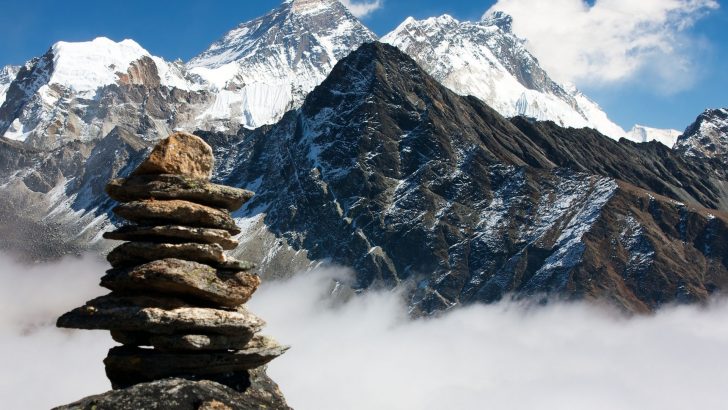
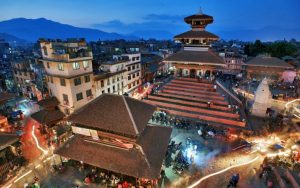
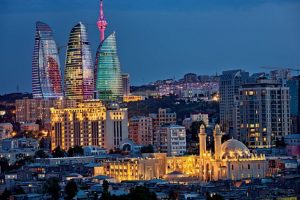

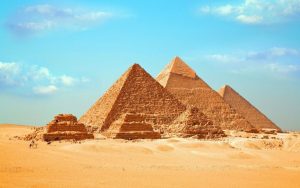
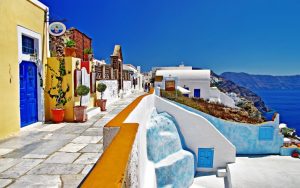
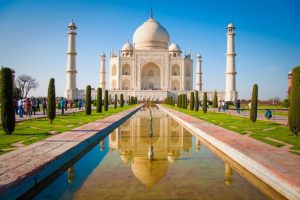
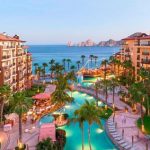
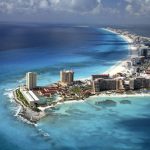
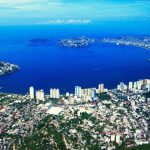
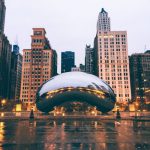
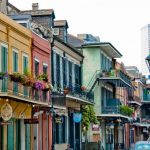
plplp
I ❤️ Nepal so much
💚🧡💙💜❤️
I also 💙 Nepal. It was the first time I ever left the US and it was amazing. The food was good and the people were very kind. I can’t wait to return
VISIT NEPAL ONCE IS NOT ENOUGH.
I have gone more than once. Three times in fact. The first time I enjoyed it a lot. The second time it was good but didn’t feel quite the same. The last time I went was in 2019 and I have to say, I will not be going back. Over the years, it seems to have become more and more unsafe and it shows because I said in the same general area each time.
Love Nepal.
Lol. Nepal is extremely safe. I’ve been 3 times too. But of course criminals exist, but I really don’t know what you’re talking about. I feel safer than anywhere in Nepal. Locals just warn me at night can bring out crime.
Nepal+You= Tons of Fun!
Hello.
I am lulut. I greatly enjoy life in nepal. I have lived here for many, many, many, many years. My parents left me here as a child (very forgetful people). I don’t hate them, though, because Nepal is mye home.
YAY!
Thank you.
Idek
Um ok but what kind of parent “forgets” to bring their child with them in a foreign country… And also what kind of parent does not come BACK to that country to get their child if they just so happen to “forget”.
There are some temples in Nepal that you are supposed to leave your child to be taught what the temple teaches.
Dangerous
Taxi Driver tried to rob and beat myself and a friends between Bhaktapur and Thammel. Someone had their phone snatched in the next hotel. Two muggers were waiting for us going back to our hotel at 1am but we were 6. A teahouse owner poisoned me to try and get me to stay longer. The natural beauty if wonderful but Nepalese culture is not. The pollution in the cities is awful too.
Epic
All these things happening to ONLY you makes me think that you yourself are at fault and probably complain about everything in life. Ive visited nepal more than 20 times and its always been safe for me. Last time I visited was in 2022 December and the Pokhara New Year street festival was epic.
ITS VERY SAFE AND BEAUTIFUL,I have no words to say